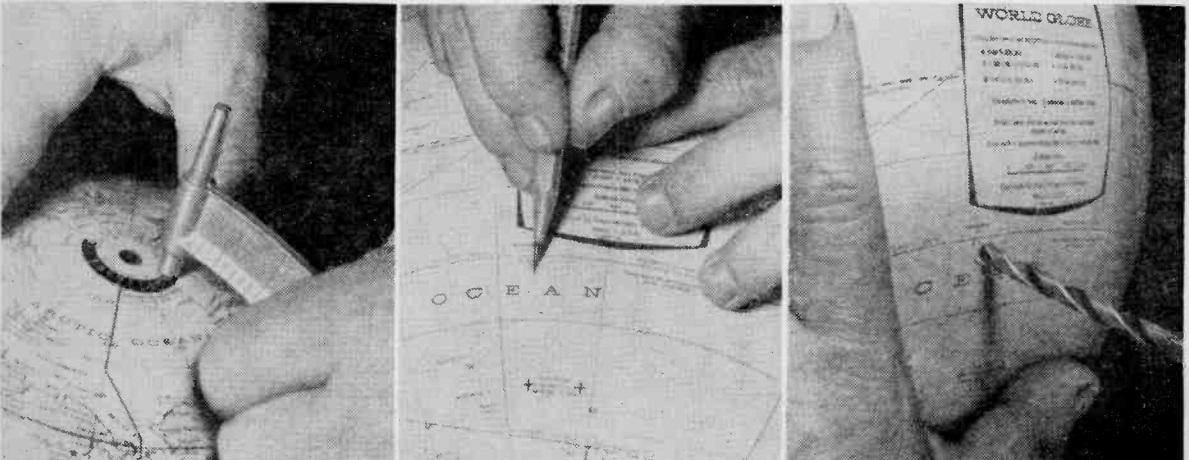Fifty years ago this month, the March 1972 issue of Elementary Electronics showed this idea to improve the utility of the globe in your radio room. Normally, the globe is mounted so that it spins just like the Earth–along its axis. But you’re not required to spin the globe, and it becomes more useful if you orient it so that it can turn along an axis through your location and your antipode–the point furthest away from you. If you’re in North America, that would be somewhere in the Indian Ocean.
The advantage of doing this is that it quickly lets you see the direction and distance to any other point. The thing holding the globe in place (known as the semi-meridian) is usually marked in degrees. But you can tape a scale in miles to it, and if you rotate any point on the globe toward that line, you’ll instantly see the number of miles.
All you need to do is remove the globe from its mounting, which is usually just a matter of slipping it out. You then drill a new hole at your location and at the opposite side, and remount it.
The student desiring to bring home the blue ribbon at the science fair will quickly realize that this simple project will answer the question of “how to convert a globe into a distance measuring instrument.”
Some links on this site are affiliate links, meaning this site earns a small commission if you make a purchase after clicking the link.


